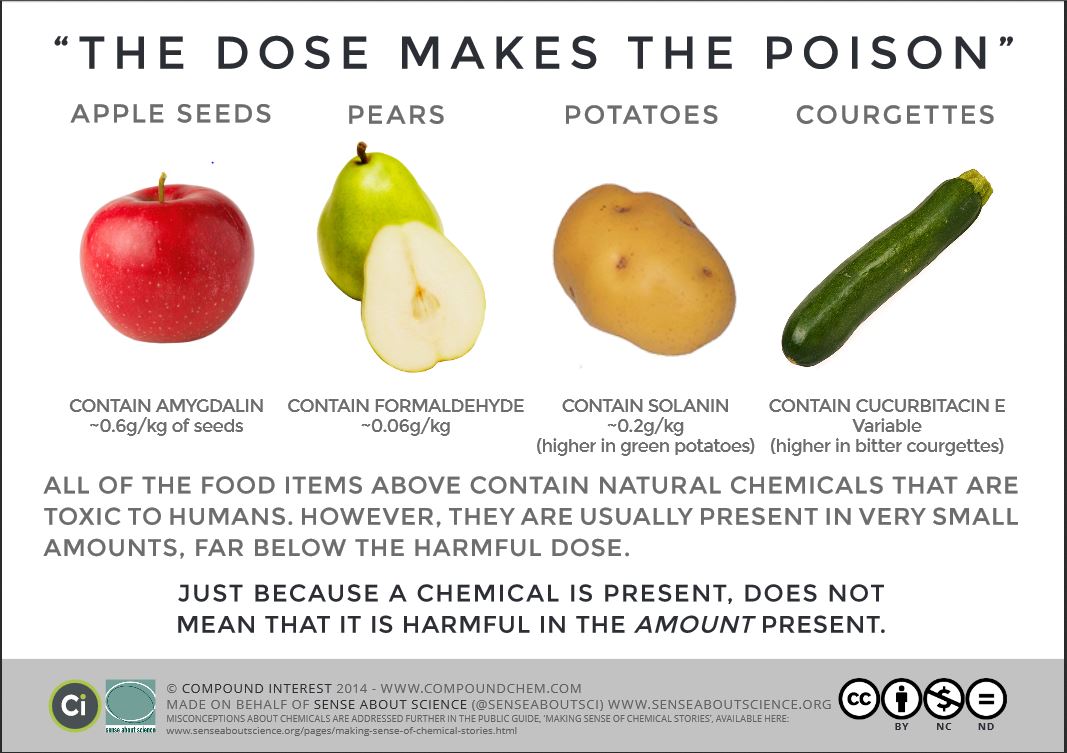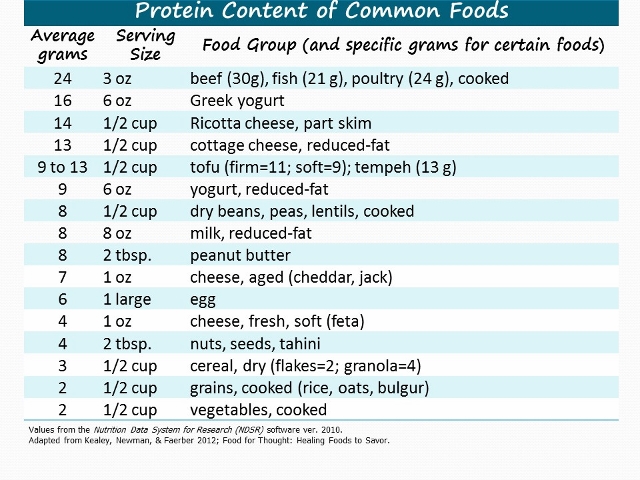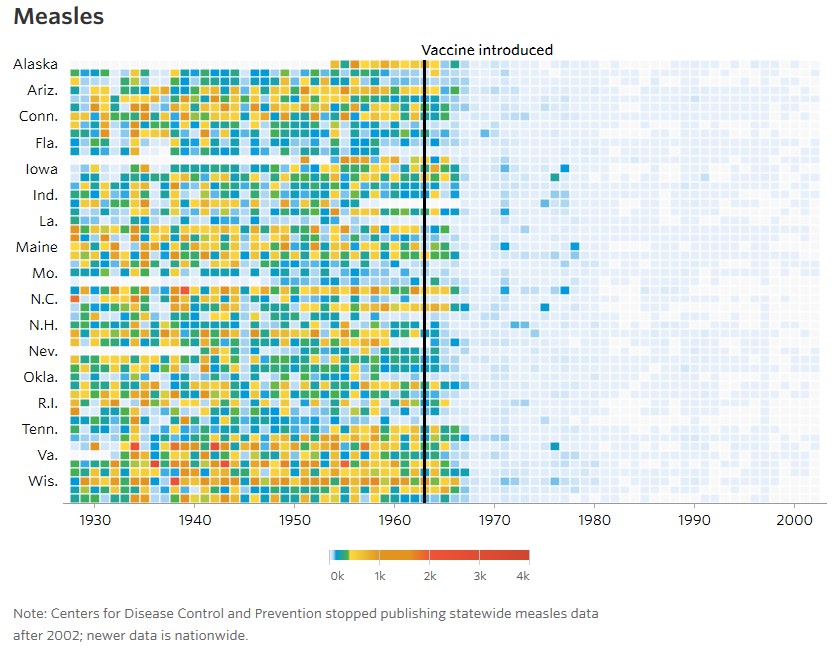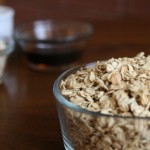This week, read about the Food Babe, the war on wheat, selling the fantasy of high protein everything, impressive graphics of vaccine effectiveness, training your brain to run faster, a scandalously bad article on HPV vaccines, and more.
The Food Babe Way is Out!
Unfortunately this book gives Vani Hari (aka the “Food Babe”) another platform to preach misleading health and medical advice.
 Why is she so popular, and why would anyone follow her advice? Hari has a poor grasp of science, and doesn’t understand peer-reviewed research or intricacies of the chemicals she vilifies. BUT . . . she preys on people’s fears, is good at marketing, and certainly knows how to work social media. Unfortunately Hari’s influence in growing, as she exploits the scientific ignorance of her web activist group of “Food Babe Army” followers.
Why is she so popular, and why would anyone follow her advice? Hari has a poor grasp of science, and doesn’t understand peer-reviewed research or intricacies of the chemicals she vilifies. BUT . . . she preys on people’s fears, is good at marketing, and certainly knows how to work social media. Unfortunately Hari’s influence in growing, as she exploits the scientific ignorance of her web activist group of “Food Babe Army” followers.
Hari’s campaign to eat and live fresh, natural, and chemical-free does sound appealing and health promoting. Glaring problems are that she distorts facts, and misleads her followers by putting all chemicals on the same platform.
Chemicals can be confusing! But don’t let uninformed people like the Food Babe explain them to you. Sense About Science produced this excellent guide that looks at common misconceptions about what chemicals are and what they do. Here is one of their graphics that illustrates a basic but very important concept that eludes the Food Babe.

More about the Food Babe:
- The Food Babe: “There is just no acceptable level of any chemical to ingest, ever”. Good article, and worthwhile comments too! (Science Blogs)
- Quackmail: Why You Shouldn’t Fall For The Internet’s Newest Fool, The Food Babe (Trevor Butterworth, Forbes)
- Vani Hari (a.k.a. The Food Babe): The Jenny McCarthy of food (David Gorski, Science-Based Medicine)
- Is The Food Babe A Fearmonger? Scientists Are Speaking Out. (NPR Health)
- The Food Babe is Anything but an Expert on Food Matters (Joe Schwarcz, Montreal Gazette)
- Lies in the Food Babe Way (Kavin Senapathy)
The War on Wheat
Tune into CBC’s Fifth Estate on February 20th, to see reporter Mike Kelly investigate the anti-wheat fad. He’ll be interviewing several experts, including Yoni Freedhoff, Timothy Caufield, and McGill’s Joe Schwartz.
Selling the Fantasy of High Protein Everything
A look at Fairlife, Coca-Cola’s new hyper-fortified milk. Fairlife has 50% more protein, 50% less sugar and 30% more calcium than typical milk, and is lactose free. The Atlantic article notes how Coke is relying on these two food trends to sell Fairlife: (1) people think they need more protein; and (2) many people think they are intolerant to some food components (e.g., lactore, gluten). Although recent research has helped us learn more about protein’s role in weight loss and muscle synthesis, the truth is that most people are getting more than enough protein in their overall diets, and consuming more than they need likely won’t yield health benefits. (The Atlantic)
Although it’s true that most people get enough protein, some groups (e.g. the elderly, athletes) may need more protein, and a product like this might be useful for them (if they don’t mind paying twice as much as regular milk!). For example, protein distribution throughout the day is important, and many people lack protein at breakfast: swapping this milk for regular milk might help reach a higher protein intake for this meal. Of course, you don’t need special milk to boost your protein. Have a look at these common foods, that will help you meet your protein needs (if you’re unsure of your protein needs, read this article).
 More Links of Interest This Week:
More Links of Interest This Week:
- Meet Steve Magness, the Mad Scientist of Running. A running coach’s unconventional mental training strategies that might help boost performance. (Outside Magazine)
- Magician-Scientist Kind of Reveals Card-Trick Secret. Pick a card. . . any card! (NY Magazine, reporting on Consciousness and Cognition, Feb 2015).
- Impressive graphics of the impact of vaccines on infectious diseases in the 20th Century (Wall St Journal). Here is an example for measles, but there are equally impressive figures for Hepatitis A, Mumps, Whooping Cough, Polio, Rubella, and Smallpox).

- Low vitamin D predicts more severe strokes, poor health post-stroke. Stroke patients with low vitamin D levels were found to be more likely than those with normal vitamin D levels to suffer severe strokes and have poor health months after stroke. (Medical News Today)
- Can Your Gut Make You Faster? Alex Hutchinson exploring the links between “friendly” bacteria and athletic performance. (Runners World)
- Beware the Meta-Analysis: Fat, Guidelines, and Biases. Thorough article on recent study looking at historic UK and US dietary advice on fats, highlighting critical shortcomings in nutritional sciences research, and the problems with meta-analyses when it comes to diet trials. (Nutrevolve)
- Dropping Science. The Toronto Star’s scandalously bad article on HPV vaccines illustrates a larger problem with Canadian newsrooms. (The Walrus)
- 5 Myths and Facts About Your Microwave. Does microwaving remove nutrients? Are “microwave safe” plastics o.k. to use? Some good answers to these questions and more. (Health)
- The Difference Between Cholesterol in Food & Cholesterol in the Body. Cholesterol confuses many! This week, we found out that the upcoming Dietary Guidelines for Americans will no longer be recommending restrictions on cholesterol. This is a nice explanation of how the cholesterol in your diet doesn’t greatly influence the cholesterol in your blood, with suggestions on how to reduce your blood cholesterol levels. (Fooducate)
 Easy Recipe!
Easy Recipe!
Simple Peanut Maple Granola.
Requires just 3 wonderful ingredients, and a great trick to maximize nutrition.